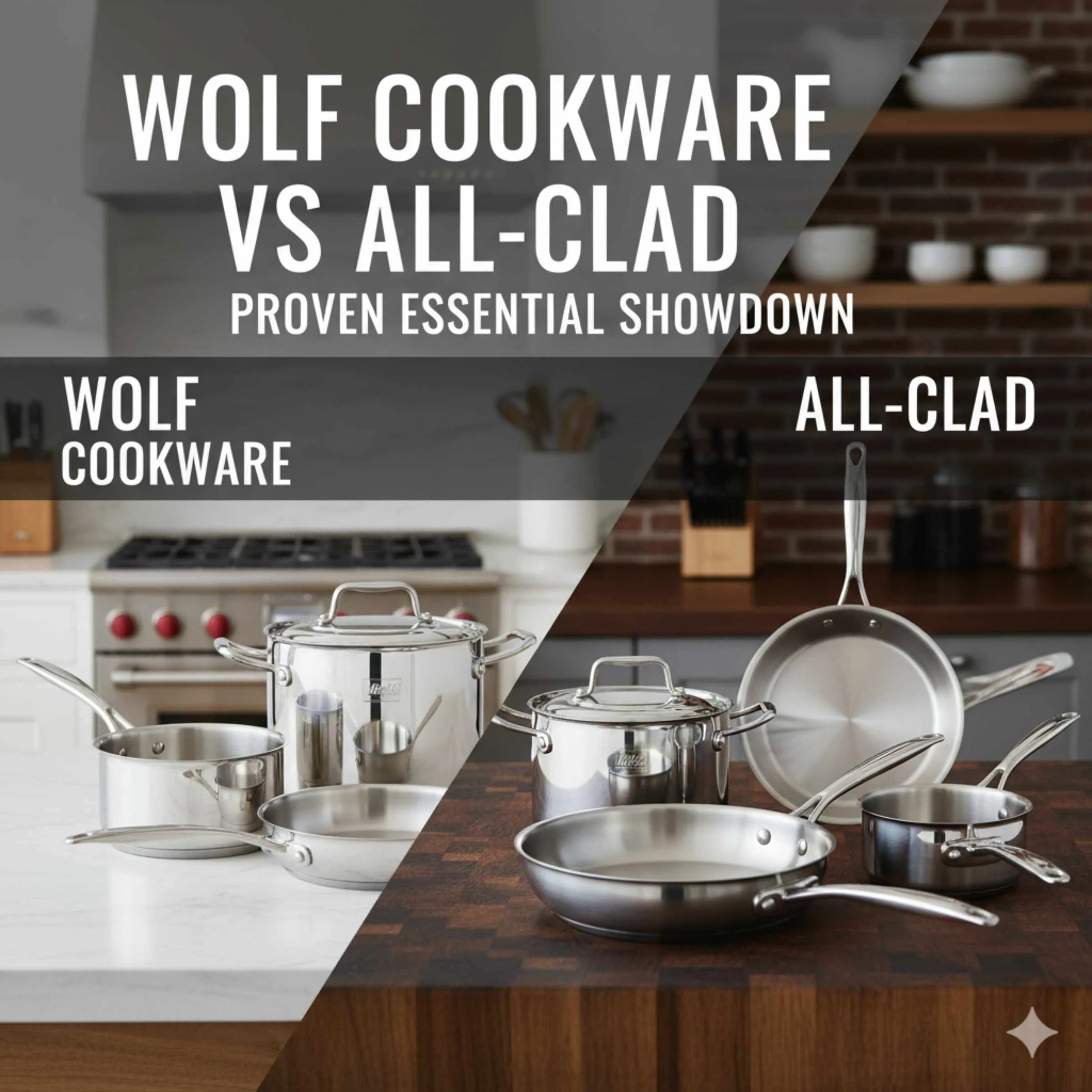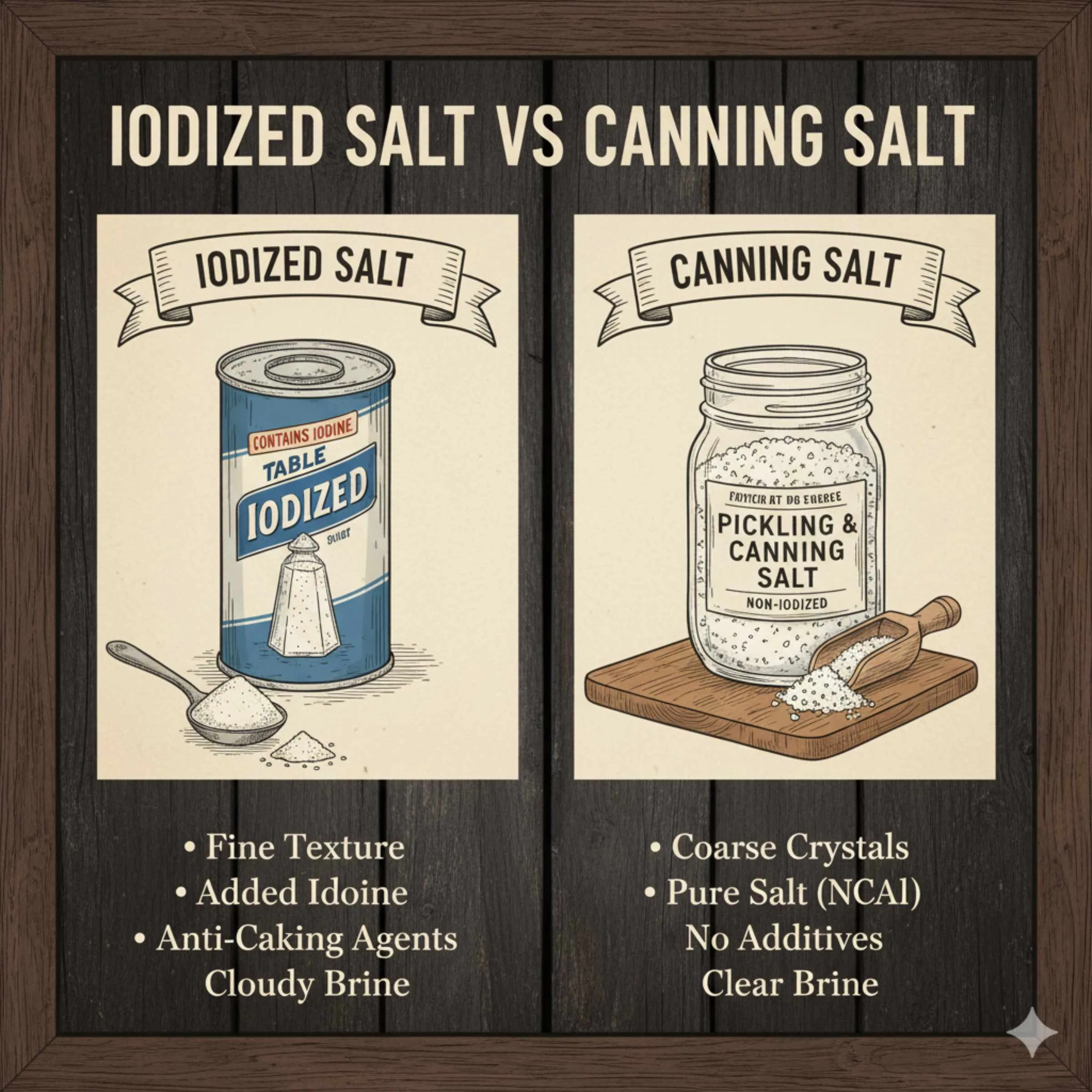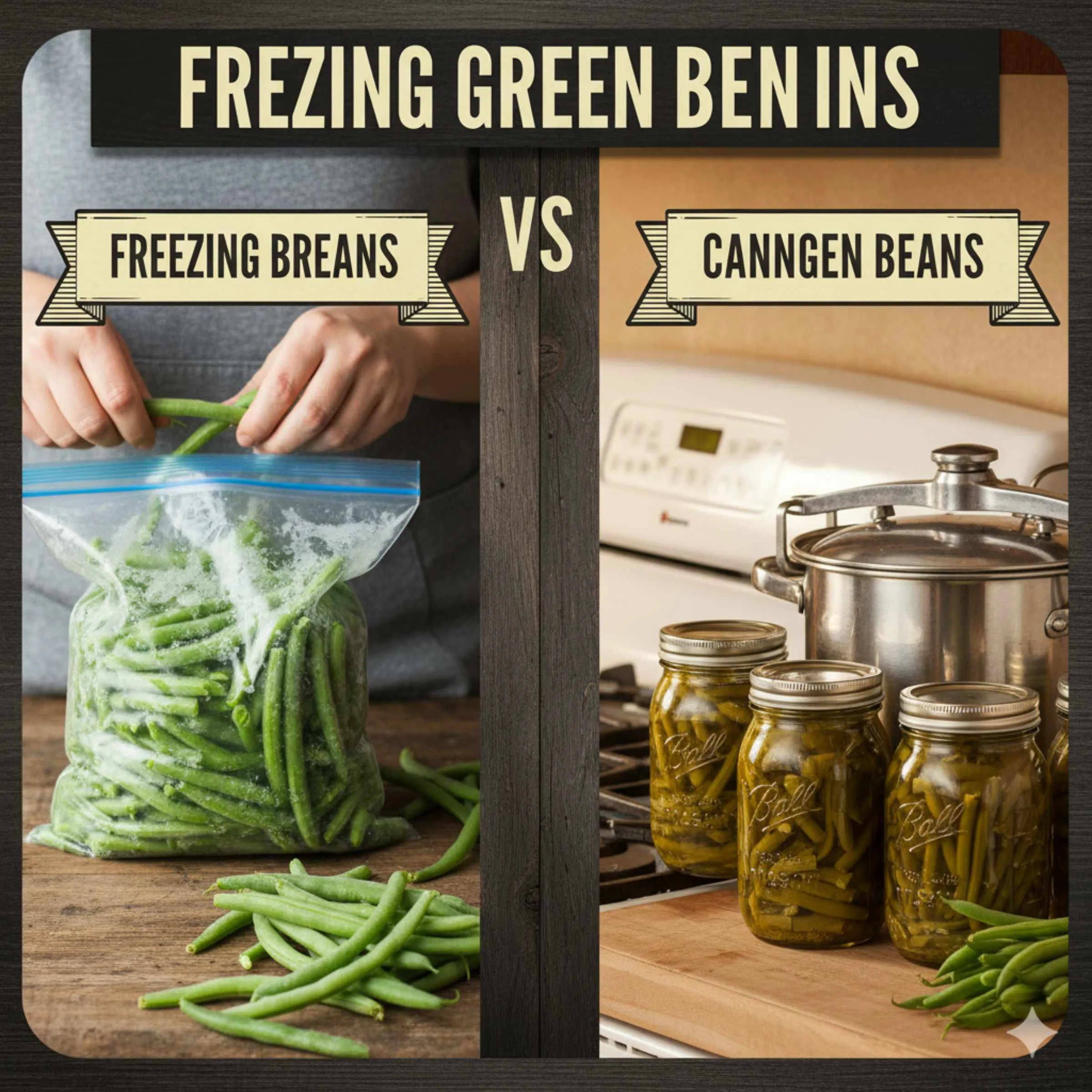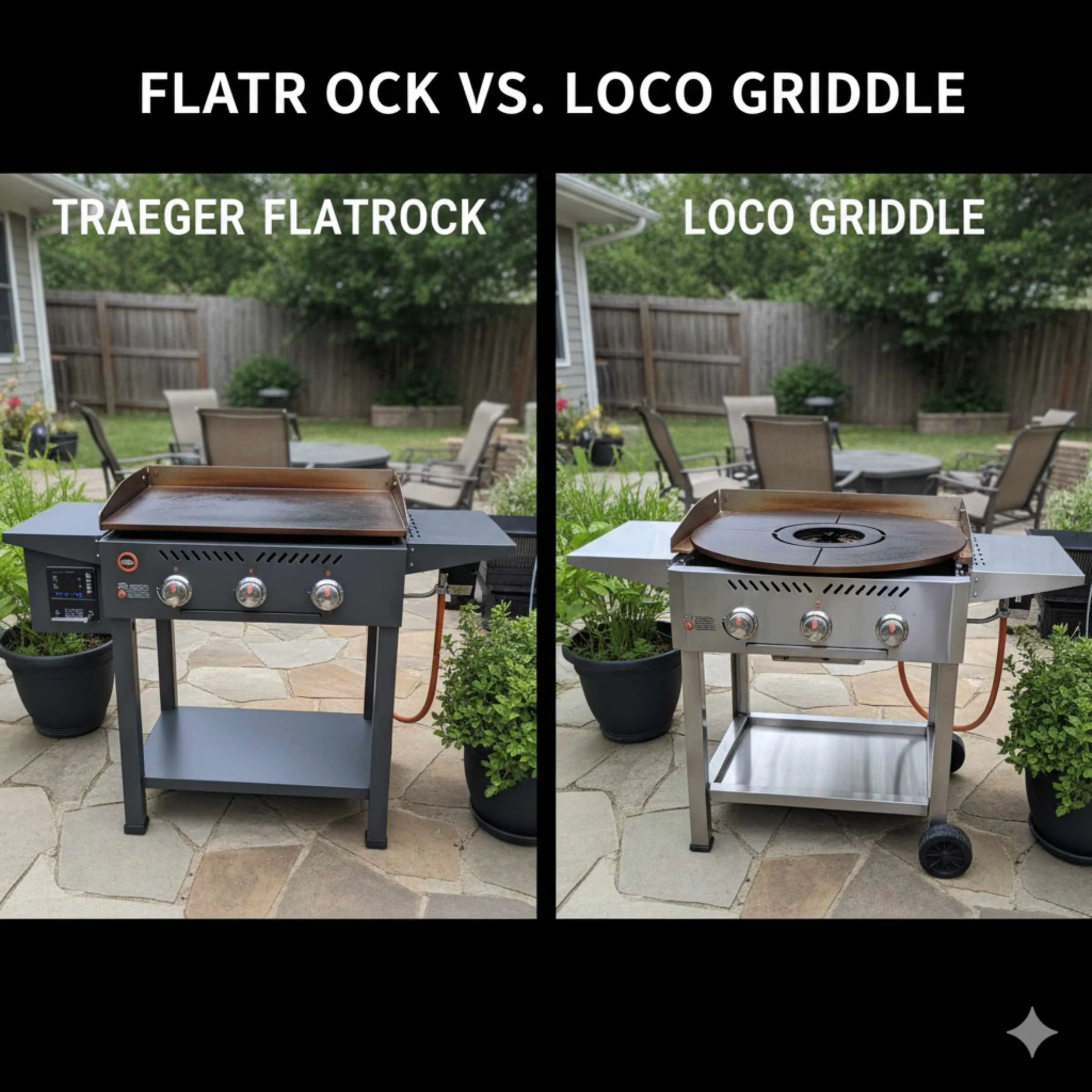Wolf Cookware vs All Clad: For most home cooks, the choice comes down to superior heat control (Wolf) versus unmatched legendary durability and heat retention (All-Clad). Both are top-tier, but understanding their core differences in construction and intended use helps you pick the set that truly fits your kitchen needs and cooking style.
Welcome to the kitchen equipment showdown! Choosing new pots and pans often feels like a tough decision, especially when you’re looking at premium brands. We are going to compare Wolf Cookware versus All-Clad. These names are famous for helping home cooks create amazing meals. Maybe you’ve heard both names but aren’t sure which one deserves space in your cabinets. Don’t worry; picking great cookware doesn’t need to be complicated. We will break down what makes each brand special in easy terms, so you can feel confident in your investment. Let’s find the perfect gear for your cooking adventures!
Why Cookware Quality Really Matters (Even for Beginners)
Think of your pots and pans as the tires on your car. While any old tire will technically roll, the right tires give you better grip, safety, and a smoother ride. Good cookware works the same way for cooking. Cheap pans heat unevenly, leading to burnt spots on one side of your omelet and raw spots on the other. This is frustrating!
High-quality cookware, like Wolf and All-Clad, offers several key benefits:
- Even Heating: This is the magic trick. Quality metals spread heat smoothly across the entire surface.
- Durability: They don’t warp when you turn the heat up high, meaning they last for years, saving you money long-term.
- Better Food Results: Even heat means your sauces won’t scorch, and your steaks will get a beautiful, consistent sear.
When you invest in premium gear, you are investing in consistent results. We are looking at two heavyweights here—brands that chefs trust. Let’s see how they stack up against each other.
Understanding the Contenders: Wolf Cookware
Wolf is generally known for its professional-grade ranges and ovens, so when they enter the cookware space, they bring that high-performance philosophy with them. Their cookware is built for serious cooks who appreciate precision.
Wolf Cookware Construction Philosophy
Wolf cookware often focuses on exceptional responsiveness and heat control. They aim to mimic the instant adjustments you get from their famous gas burners right there in your pan.
They frequently use fully clad construction, meaning layers of material (like aluminum sandwiched between stainless steel) run all the way up the sides of the pot, not just the bottom. This ensures heat goes where you need it—up the sides for sautéing.
Key Features to Note About Wolf
- Responsive Heating: Reacts quickly when you adjust the burner temperature.
- Heavy-Duty Handles: Often designed for a secure, oven-safe grip.
- Aesthetic Finish: Often features a sleek, professional look that matches their appliance line.
If you like to adjust your stove settings frequently while cooking—say, quickly dropping the heat under simmering tomatoes—Wolf’s responsiveness might be a fantastic feature for you. It feels more immediate, similar to how a skilled driver feels connected to the road by responsive steering.

Understanding the Contenders: All-Clad
All-Clad is often considered the gold standard, especially in North America. If you walk into a cooking school or a high-end restaurant kitchen, you are very likely to see All-Clad. They essentially pioneered the multi-ply, fully-clad stainless steel structure that everyone else tries to copy.
All-Clad Construction Philosophy
The core strength of All-Clad lies in its incredible material composition, usually involving multiple layers of bonded aluminum and stainless steel. This intense bonding process creates cookware that is incredibly sturdy and extremely stable, even under high, sustained heat.
They are famous for two things: heat retention (keeping the heat steady once it’s hot) and near-indestructibility. This is the cookware that can be passed down for generations.
Key Features to Note About All-Clad
- Superior Heat Retention: Once hot, it stays hot, which is perfect for getting a deep, crispy crust on meat without the pan cooling down too fast.
- Proven Durability: Built like a tank; it withstands heavy use and high temperatures without warping.
- Variety: All-Clad offers several lines (D3, D5, Copper Core) to suit different budgets and needs.
Think of All-Clad like a heavy-duty pickup truck for the kitchen—reliable, sturdy, and built to handle any load you throw at it, day in and day out. For more on how bonding materials affects cooking, you can check out technical guides on metal properties, such as those discussed by material science departments at universities.
The Direct Showdown: Wolf Cookware Vs All Clad
Now that we know the background, let’s put them head-to-head using the criteria that matter most to the home cook.
1. Construction and Materials
Both brands utilize fully clad construction, which is the professional way to build stainless steel cookware. However, the specific layers and bonding techniques differ slightly, affecting performance.
| Feature | Wolf Cookware | All-Clad Cookware |
|---|---|---|
| Core Material Focus | Focus on responsiveness and even energy distribution. | Focus on maximum heat retention and structural integrity (usually higher aluminum content in the core). |
| Cladding Style | Full cladding often reaching the rim for high-side heat. | Proven, tight bonding (especially D5/Copper Core) for warp resistance. |
| Weight & Feel | Generally feels substantial and balanced. | Can feel slightly heavier, emphasizing density for heat storage. |
2. Heat Performance: Responsiveness vs. Retention
This is where the biggest difference lies, and it often comes down to personal preference in steering your heat source:
- Wolf (Responsiveness): If you are constantly fiddling with the temperature dial—bringing water to a boil, then immediately dropping it to a gentle simmer—Wolf reacts to those changes faster. It’s about immediate control.
- All-Clad (Retention): If you are searing scallops or making a pan sauce that requires prolonged, steady high heat, All-Clad is excellent at holding onto that heat without dipping significantly when you add cold ingredients.
For beginners, All-Clad’s better heat retention can actually be more forgiving. If you get distracted for a moment, the overall temperature drop isn’t as severe as it might be in a less dense pan.
3. Ergonomics and Handling (The Handle Test)
How a pan feels in your hand, especially when it’s full of hot soup you are trying to carry to the table, is crucial. Both brands have distinct handle designs, which are highly debated among enthusiasts.
All-Clad Handles: They famously use a concave (U-shaped or deeply grooved) handle design. Some cooks love it because it locks securely into the palm; others find it uncomfortable after prolonged use, especially if you have weaker hands.
Wolf Handles: Wolf generally opts for a thicker, more rounded, and fully contoured handle design. Many users find the Wolf handle instantly more comfortable and easier to hold securely right out of the box, requiring less “breaking in.”
If possible, go to a store and physically hold both sets. This might be the deciding factor for your comfort!
4. Cleaning and Maintenance
Since both are primarily high-quality stainless steel, the cleaning process is similar, but there are minor differences to consider:
- dishwasher safety: Both are generally listed as dishwasher safe. However, for any high-end stainless steel cookware, hand washing is always recommended to preserve the exterior finish and longevity.
- Stuck-on Food: Stainless steel requires proper preheating (the Leidenfrost effect—a tiny bit of water beads and dances before evaporating) to prevent sticking. If sticking occurs, both require soaking or using a specialized cleaner like Bar Keepers Friend to remove discoloration or stuck proteins.
- Durability Against Abrasives: Both handle steel wool or scouring pads better than nonstick pans, but you should still be gentle to maintain the mirror finish on the exterior.
Neither is “easier” to clean than the other; both demand similar attention to maintaining their material integrity.
5. Price Point and Value Proposition
Let’s face it—these are premium purchases. You are looking at a significant investment, often costing hundreds or thousands for a full set.
All-Clad often presents slightly more aggressive pricing options because they have multiple lines (D3 is typically their entry-level quality stainless, while Copper Core is their apex). You can find good sales on All-Clad, making premium quality more accessible.
Wolf Cookware tends to sit at a very consistent, high-tier price point, reflecting its specialized design philosophy. You are generally paying for performance engineering paired closely with their appliance brand.
The Value Check: If you plan on using these pans daily for the next 20 years, both represent excellent long-term value compared to buying cheaper sets every few years. Look at sales events for the best deal.
Making the Right Choice for Your Kitchen Style
Deciding between these two champions isn’t about declaring one “bad”—it’s about matching their strengths to your needs. Here is a simple guide to help you decide which one fits your daily routine better.
When You Should Lean Towards Wolf Cookware
Choose Wolf if:
- You value instant feedback from your cookware when adjusting burner temperatures.
- You enjoy cooking techniques that require constant temperature modulation (like delicate sauce work).
- You prefer a slightly more rounded, comfortable handle design right away.
- You own or plan to buy Wolf ovens or ranges and want aesthetic continuity.
When You Should Lean Towards All-Clad
Choose All-Clad if:
- Your primary goal is incredible, lasting durability and heat stability for high-heat searing processes.
- You prioritize excellent heat retention (the pan doesn’t cool down easily when you add ingredients).
- You are looking for a brand with a longer, more established history in the premium cookware segment.
- You appreciate potentially finding better introductory sales across their various model lines (D3, D5).
Expert Tips for Using Premium Stainless Steel (Wolf or All-Clad)
If you’ve decided to make the jump to one of these excellent brands, remember that quality stainless steel works differently than nonstick pans. Mastering these basic steps ensures you get that beautiful, professional sear every time and never fight a sticking mess again.
- Preheat the Pan First: Always put the pan on the burner on medium or medium-high heat for 2–5 minutes before adding any oil.
- The Oil Test: Add your cooking oil. Wait until the oil shimmers slightly or you see very faint wavy lines forming on the surface. If you use a water droplet test (the Leidenfrost effect), the water should momentarily ball up and dance across the surface before evaporating.
- Add Food Properly: Once the oil is ready, place your protein or vegetables in the pan. Do not move the food immediately. Give it 2–3 minutes to form a crust. If you try to flip it and it sticks lightly, it’s not ready. When it’s genuinely done searing, it will naturally release from the pan surface.
- Use Sufficient Heat: For stainless steel to perform its best, it needs adequate heat. Avoid cooking on the absolute lowest setting initially, as this encourages food to boil in its own moisture rather than searing.
Proper preheating is vital, whether you have Wolf or All-Clad. Learning this technique is the key to unlocking the full potential of these fantastic tools. It’s a simple habit that brings huge results!

Frequently Asked Questions (FAQ) for Beginner Cookware Buyers
Q1: Are Wolf and All-Clad pans safe to use on an induction cooktop?
A: Yes, both brands offer fully clad cookware lines that contain enough magnetic stainless steel contact with the cooktop (usually on the exterior layer) to work perfectly with induction burners. Always double-check the specific product description, but generally, they are induction ready.
Q2: Which brand is better if I cook a lot of delicate sauces?
A: This depends on your stove. If you use a responsive gas stove, Wolf might give you a slight edge due to its responsiveness. However, All-Clad’s even heat distribution prevents spotting, making it excellent once you manage the temperature.
Q3: Do I really need to hand wash these expensive pans if they say they are dishwasher safe?
A: While they can go in the dishwasher, hand washing is highly recommended. Dishwasher detergents are harsh and can dull the shiny stainless steel finish over time. A quick wash with warm, soapy water preserves their beautiful look longer.
Q4: Is the All-Clad handle really that uncomfortable?
A: Comfort is subjective! Many people find the traditional concave handle tricky at first because it forces you to grip higher up. If you have arthritis or hand strength issues, try to test the handle shape before buying, or perhaps start with Wolf’s rounder design.
Q5: For general home cooking, which brand offers the best overall value?
A: All-Clad often edges out slightly on value because their D3 line is widely available and offers near-professional performance at a slightly lower entry price point than premium Wolf sets. Both are big investments, but All-Clad has more tiers of pricing.
Q6: Will my stainless steel pan ever look blue or spotted after high heat?
A: Yes, this rainbow or straw-colored discoloration is called “heat tint.” It happens when stainless steel gets very hot. It is completely harmless and does not affect performance. You can remove it easily using white vinegar or Bar Keepers Friend.
Conclusion: Trusting Your Gut and Your Heat Source
Deciding between Wolf Cookware and All-Clad is like choosing between two top-tier, dependable vehicles. You truly cannot go wrong with either choice when it comes to quality, longevity, and performance in the kitchen. Both brands are designed to help you cook better and last for decades.
If you are a cook who loves the absolute instant connection to the heat source—making micro-adjustments often—let the responsiveness of Wolf guide you. If you are looking for rock-solid heat stability that ensures a perfect, even foundation for high-heat cooking and legendary durability, All-Clad remains the trusted cornerstone.
Take a deep breath, review which style of cooking you do most often, and pick the one that feels best in your hands. Congratulations! You are about to upgrade your kitchen tools to a professional level. Happy cooking—you’ve got this!








Leave a Reply